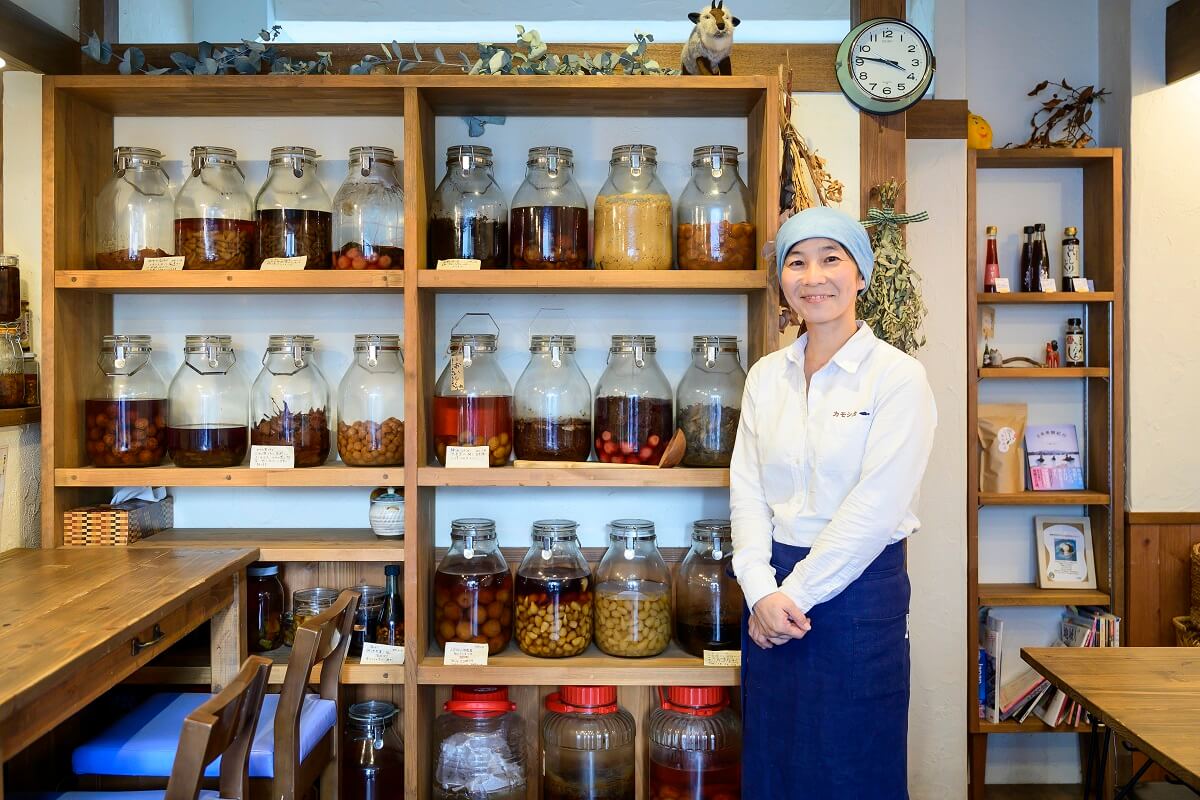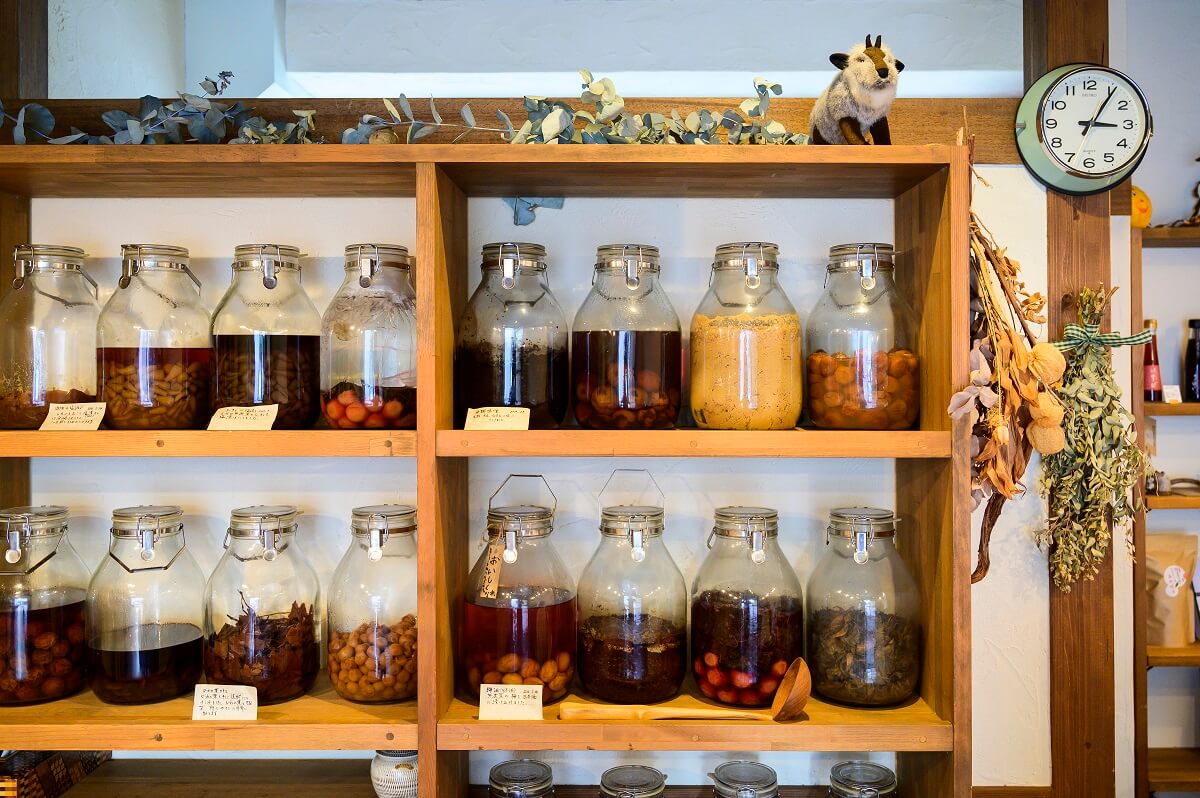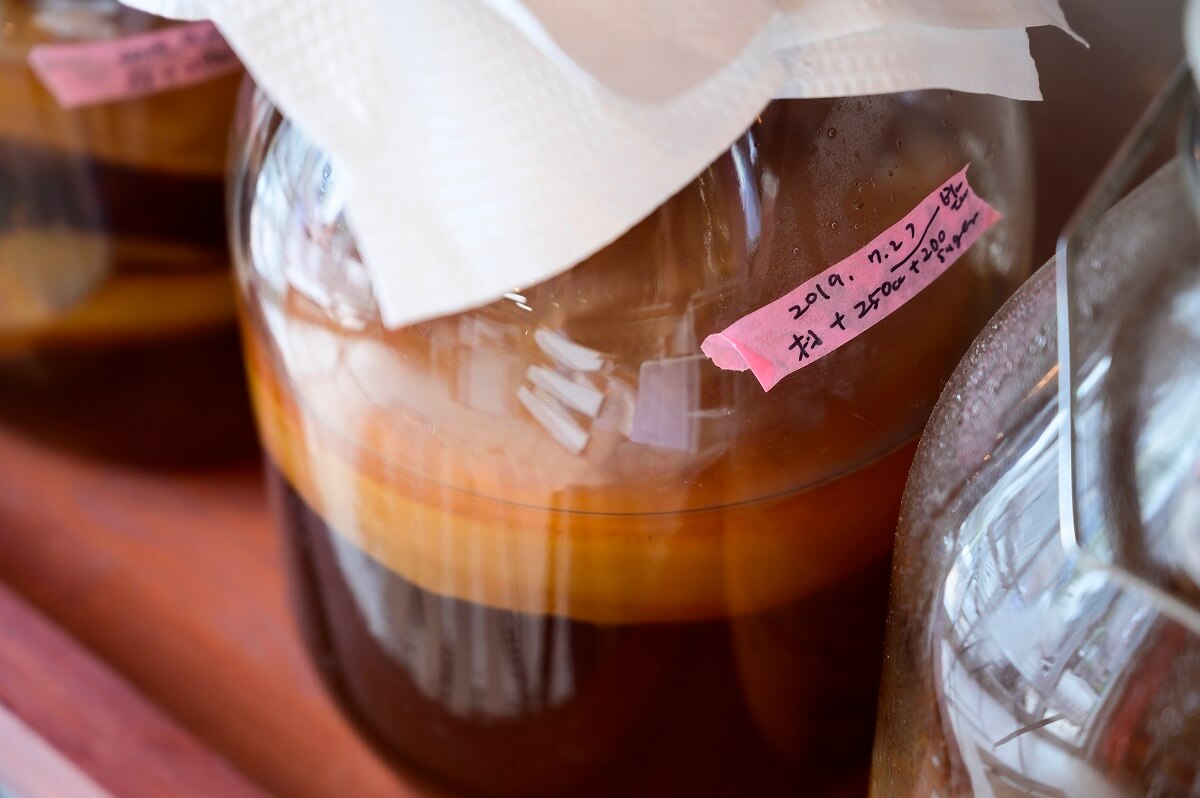
What you want to convey in the “Kamoshi shelf”, a fermented art that brews and fascinates.
On the first floor of GOOD NATURE STATION, GOOD NATURE MARKET In one corner, there will be an exhibition “Kamo-shelf” on the theme of fermented food. It is like arranging jars filled with fermented foods like a Buddhist mandala, which is exactly like art using fermentation. It has been devised so that when you face each other, you can feel the sacredness of your spine. Mr. Seki from Fermented Shokudo Kamoshika, a cafe restaurant specializing in fermented foods, has created this “Makashi shelf” together. This time, I would like to introduce the thoughts that Seki can put on the “Kamoshi shelf” and the world view that I want to convey through fermentation.
The art of fermenting “lifelike life”
“Kamoshi shelf” is a shelf that displays bottles with various fermented foods. “Fermentation Restaurant Kamoshika” is also installed in front of the store. “I made it to show that the main character of this store is microorganisms,” says Seki.

GOOD NATURE STATION In order to express the world of fermentation more deeply, the shelf designed a mandala-like image. Using a paint that has been fermented and matured from unripe astringent fruit juice, the center where the fermented food is displayed will be finished with lacquer.
Seki: “In ancient Japan, sake is the work of a shrine maiden who serves God. In ancient Egypt, beer is a tribute to God. In Christianity, bread and wine are symbols of God's body. It seems that fermented foods have become offerings to the gods and Buddhas.At the GOOD NATURE STATION's camo shelf, you can feel the connection between the fermented food and the world where the gods and Buddha cannot see. I want to express it. ''
Fermentation is the work of countless lives that are invisible. We are discussing with Mr. Seki to convey that worldview.
Reconsidering the way of life from fermentation
One of the fun aspects of fermentation is that you can feel the work of countless small lives. Ms. Seki believes that we can re-examine our own way of life through the world of fermentation.
The number of cells that make up the human body is tens of trillions, whereas there are about 100 trillion bacteria in the body. In fact, humans coexist and coexist with more bacteria, fungi, viruses, etc. than the number of somatic cells.
In other words, human life is not independent as an individual, but a collection of lives that are alive through small life connections. “I think the world of fermentation is very similar to Buddhism,” says Seki. In Buddhism, everything is made up of auspicious and causal relationships, and there is no “I” that exists independently.

Seki: “Fermented food is the result of the complementation of microorganisms and humans that cannot be achieved by humans alone. Although humans are great, the life of microorganisms is also life. I don't think either is above or below. "
Eating fermented foods also means connecting with many invisible lives. The message that antelopes continue to send out, “Life is vitalized by life,” includes profound questions about modern society, such as looking at non-human life and the ecosystem itself.
Fermentation can be a common language in the world


As Seki says, “Finally, fermentation is the culture itself,” mirin, vinegar, soy sauce, and miso are all fermented foods that support Japanese Japanese food registered as an intangible cultural heritage by UNESCO. In addition, the Japan Brewing Society has designated the koji mold, which produces fermented foods that support Japanese food, as a national fungus. Fermentation has also supported the taste of Japanese food.
Seki: “It is a Japanese food culture city Kyoto I think that the place where we take advantage of the old things and take in new things slowly leads to fermentation. Fermentation Kyoto But I don't think I'll get bored because there's something interesting that comes out when I dig. "
In addition, Ms. Seki believes that fermentation can be a common language in the world. The history of fermented food is very old, and the Caucasus region has excavated traces of wine making about 8000 years ago. The ingredients are various, such as vegetables, fruits, cereals, seafood, and animal milk. There is always a fermented food that is unique to the land in any part of the world. It can be said that mankind has nurtured wisdom that coexists with invisible life throughout its history.
Seki: “There are words that mean fermentation in every country, and people all over the world have fermented food as a unique culture. GOOD NATURE STATION Moreover, people from various countries may be interested in the shelf.
GOOD NATURE STATION You can see fermented foods made by antelopes and the fermentation process on the shelf, which may be born in the corner. With Kamshika GOOD NATURE STATION How do you express the world view of fermentation? Please pay attention to the shelf.


